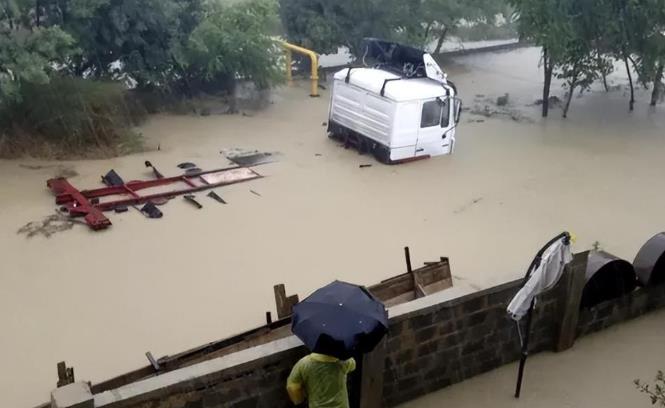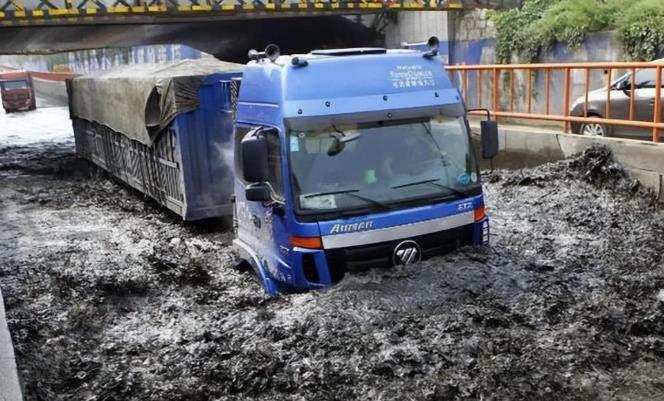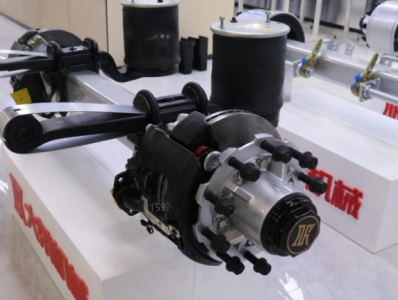What should be paid attention to when wading a vehicle?
Affected by the typhoon in the past few days, there have been large-scale torrential rains across the country. Many cities have encountered the strongest precipitation that has not been seen in many years. The urban waterlogging is serious, which poses a great threat to people's production and life and even the safety of life and property trailer axle.

Such extreme weather has also brought great challenges to logistics and transportation. Although freight vehicles are taller, larger, and heavier than passenger cars, they have some advantages in dealing with waterlogged roads and water flow impacts, but this does not mean that trucks are necessarily safe for wading, especially in some low-lying roads. There is still a danger of water soaking in the truck. If the vehicle is fully loaded with goods at this time, it will undoubtedly be a serious property loss for the owners.
If the car owner encounters water on the road while driving, remember to slow down. The experience of "going sand fast and water slowly" still has some truth. When the road surface is submerged by water, it is impossible to directly see the depth of the water from the appearance. At this time, you can use the surrounding objects such as other vehicles, curbs, light poles, isolation guardrails, etc. to assist in judging.
When the water depth is lower than the axle, the vehicle can pass with confidence;
When the water depth is below the axle and lower than the upper edge of the tire, it is necessary to pass cautiously, and maintain the wheel ends and chassis in time after wading;
When the water depth completely submerges the tires, it is not recommended to continue driving, because at this time the axle and transmission are completely submerged in the water, and the air holes are easy to enter water, which may cause damage when driving, and timely maintenance is required after wading;
When the water depth reaches the height of the engine, passage is prohibited. At this time, forcibly wading through the water may cause water to enter the engine, and the vehicle will stall and stall.
When the vehicle passes through the water-logged road, keep a low gear and keep the accelerator steady. The vehicle speed must be slow. First, the vehicle with stable and continuous power output is not easy to stall; moreover, the slower and more stable the vehicle speed, the less likely it is to accumulate water. Splashing makes wading safer; in addition, when the speed is slow, you can better observe the road ahead and allow sufficient reaction time.
If the vehicle stalls during the wading process, do not rush to start the second ignition, because as long as there is a second ignition, the insurance company will not compensate the engine damage caused by it. It is best to open the door and check that the water level has not reached the tire. If any part of the tire is below the axis, you can rest assured to start the ignition; if it is not over the tire, do not try to start the ignition, you should immediately disconnect the battery power supply, contact the insurance company, and call for rescue.

When the vehicle passes through the wading section smoothly, it is recommended trailer axle that the owner choose a safe place to pull over and stop, and check whether the engine and electrical components have been flooded, whether the anti-water ingress device has been restored to its original state, whether the radiator is blocked by mud and sand, and whether there are foreign objects on the front and rear axles. Wait, and step on the brake a few more times to see if the braking force is affected. If there is no abnormality, go on the road again.
After entering the rainy season, car owners should try to choose high-lying road sections or parking lots when parking to reduce or avoid vehicle soaking in water. If the vehicle is flooded by accident, the car owner should report the case to the vehicle insurance company in time:
When the vehicle is in the underground garage or low-lying open area, after the rain recedes, confirm the location of the vehicle in time, take photos and keep them, and report to insurance;
If the vehicle is parked at a high place and there is no serious risk of soaking in water, it should be checked in time after the rain subsides. If it is found to be soaked or seriously flooded, you can also report to the insurance company;
After discovering that the vehicle is flooded, do not trailer axle start the ignition by yourself. If you need to move the vehicle, you can directly find a tow truck to tow it away.

For vehicles that often enter and exit rainy areas, for safety reasons, it is recommended that car owners purchase car damage insurance and water wading insurance, so that in the event of water soaking, the relevant losses can be compensated by the car damage insurance and water wading insurance.







